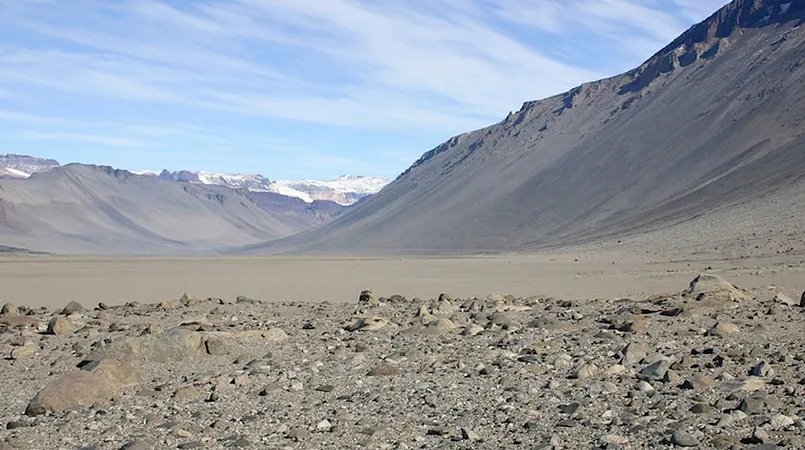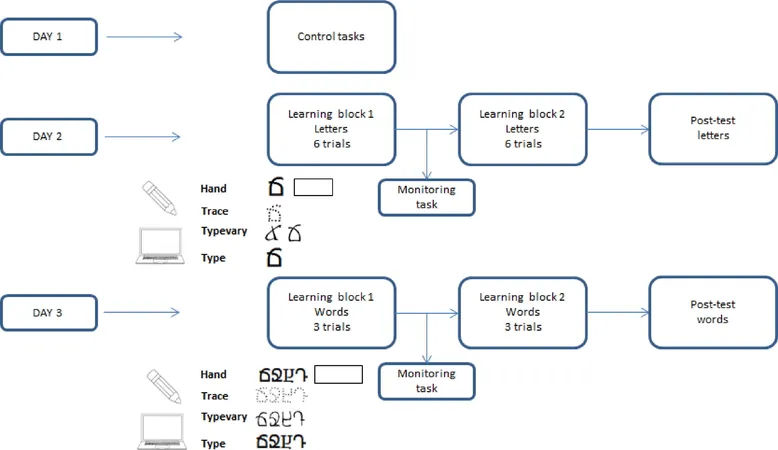
Unlocking the Secrets of Martian Permafrost: Can Temperature Cycles Create Habitability?
2025-04-21
Author: Nur
Searching for Life Beyond Earth
As humanity gazes at the stars, the quest for extraterrestrial life often revolves around the quest for water and the ideal environments that might support living organisms. Among these environments, dry permafrost has largely remained in the shadows.
The Untapped Potential of Dry Permafrost
Dry permafrost, essentially ice-free frozen soil, holds immense potential that scientists have only begun to explore. Recent studies suggest that diurnal temperature fluctuations could enhance water activity—an essential ingredient for life—within these icy soils, yet the mechanics behind this phenomenon had remained elusive.
Significant Discoveries in Soil Dynamics
In groundbreaking experiments and simulations, researchers delved deep into this question, examining how temperature shifts affect water activity in dry soil containing only vapor and absorbed moisture. Their findings revealed that these heating cycles could significantly boost water activity levels.
A Promising Boost in Water Activity
As warmer soil grains release water vapor, this moisture drifts to cooler areas of the soil, which leads to a marked increase in local water activity. Laboratory tests using loess and clay soils reported water activity enhancements ranging from 0.06 to 0.12. This was more than merely a laboratory curiosity—simulations suggested that under certain conditions, even Antarctic soils might intermittently reach levels conducive to life.
Martian Climate: A Different Story
Despite these thrilling revelations, the current Martian environment remains inhospitable, with temperatures too low and moisture levels too scant for this water-boosting mechanism to facilitate habitability. However, researchers meticulously noted that periods of high obliquity on Mars could mimic conditions found in Antarctica, potentially paving the way for future investigations into the Red Planet’s weather and its capacity to sustain life.
The Future of Martian Exploration
As space agencies prepare for future missions to Mars, understanding the dynamics of dry permafrost becomes crucial. If temperature fluctuations can stir up life-sustaining water activity, it could redefine our strategy for searching for life beyond Earth. The potential for habitable zones on our neighboring planet might just be more viable than we ever imagined.




 Brasil (PT)
Brasil (PT)
 Canada (EN)
Canada (EN)
 Chile (ES)
Chile (ES)
 Česko (CS)
Česko (CS)
 대한민국 (KO)
대한민국 (KO)
 España (ES)
España (ES)
 France (FR)
France (FR)
 Hong Kong (EN)
Hong Kong (EN)
 Italia (IT)
Italia (IT)
 日本 (JA)
日本 (JA)
 Magyarország (HU)
Magyarország (HU)
 Norge (NO)
Norge (NO)
 Polska (PL)
Polska (PL)
 Schweiz (DE)
Schweiz (DE)
 Singapore (EN)
Singapore (EN)
 Sverige (SV)
Sverige (SV)
 Suomi (FI)
Suomi (FI)
 Türkiye (TR)
Türkiye (TR)
 الإمارات العربية المتحدة (AR)
الإمارات العربية المتحدة (AR)